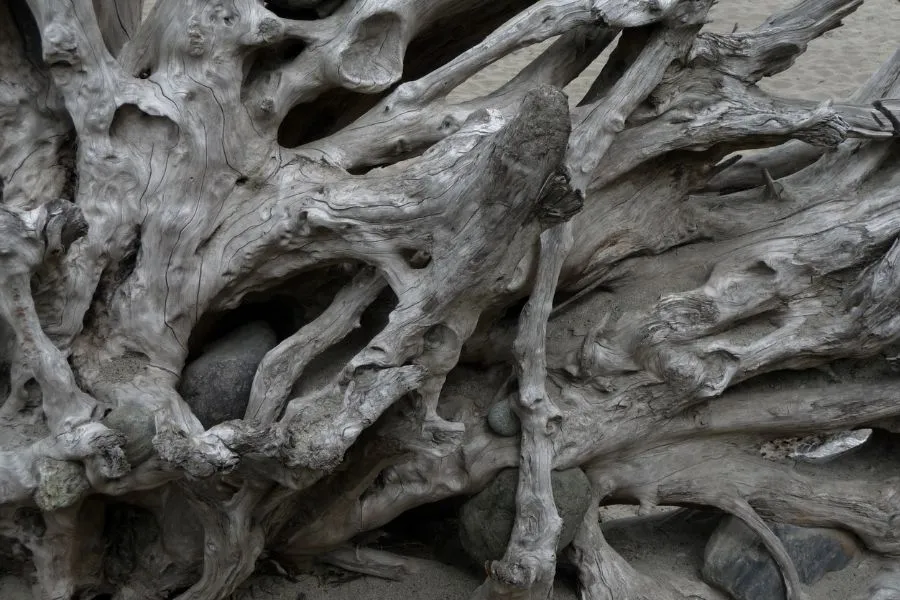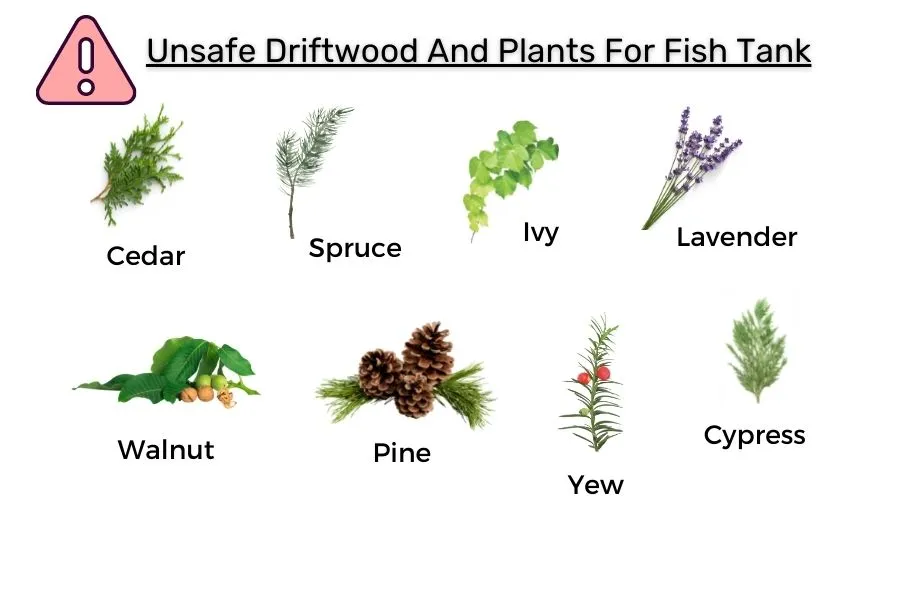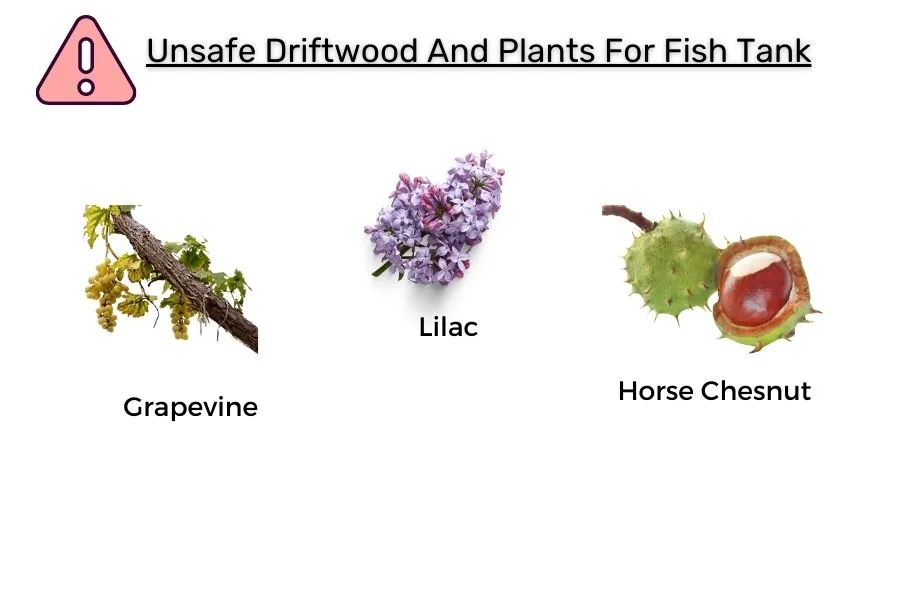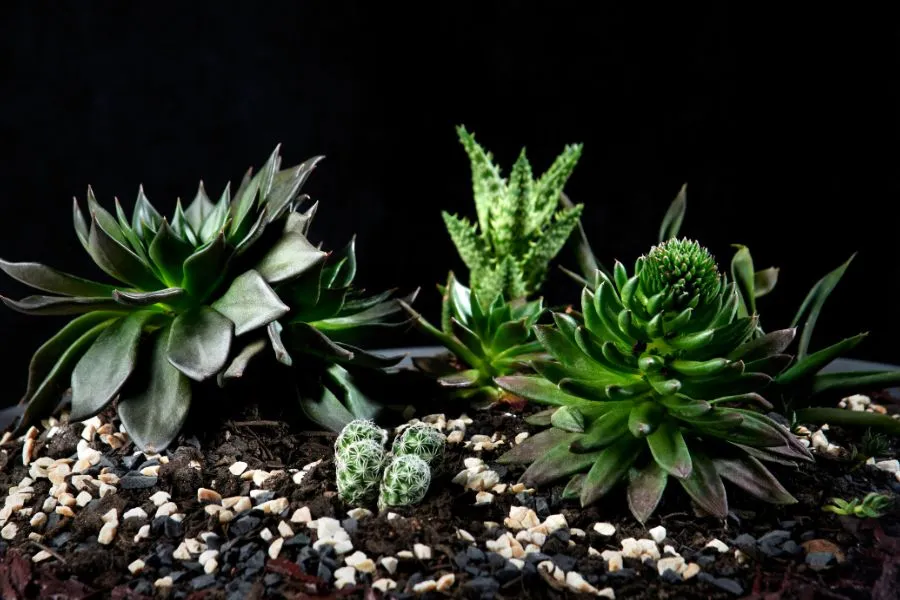There are special types of driftwood that are selected to be particularly good for reptile terrariums. Driftwood is also commonly used in aquariums. So, today I will explain if reptile driftwood can be used in an aquarium.
As a general rule, reptile driftwood can be used in an aquarium. But, some fish bump up against things in an aquarium such as driftwood, therefore you need to remove any sharp edges on the reptile driftwood. The driftwood should also be prepared to remove tannins.
Driftwood from some species of trees should not be used, either because they contain toxins, or they decompose so quickly in water that it’s a bit pointless putting them in an aquarium.

Virtually all driftwoods will also put tannins into the water of an aquarium which will discolor the water for a very long time. So, below I will explain what types of wood can be put in an aquarium, and how to prepare wood so that it doesn’t cause the negative effects from the tannins.
What Kind of Driftwood Can You Put in an Aquarium
It’s estimated there are 73,000 species of trees found on Earth. Therefore, chances are a piece of driftwood you have is a different species of tree to another piece of driftwood you find or get. Driftwood from some species of trees should not be used in an aquarium, so this is what type of driftwood you can put in an aquarium.
Oak, Alder, Hawthorn, Birch, Beech, Cherry, Heather, Oak, Apple, Pear, and Sycamore driftwood can be put in an aquarium. As well as, any driftwood for aquariums that is sold at pet stores. Below is a list of species of wood that should not be used in an aquarium.
Grape is a common type of wood used for reptile terrariums, however, should not be used in an aquarium.
Here’s a list of species of trees that should not be used in an aquarium:
- Cedar
- Cypress
- Grape (grapevine)
- Horse chestnut
- Lavender
- Lilac
- Ivy
- Pine
- Spruce
- Walnut
- Yew

(source: INJAF.org)

The reason is that they are a softwood which will break down very quickly. Or, they contain toxins in the wood that will harm fish and other aquatic animals.
It can often be difficult to identify what type of tree a piece of driftwood is from, unless you are experienced in a related hobby like wood working, you are an arborist yourself, or have an arborist friend.
For that reason, it can be a good idea to stick with driftwood from pet stores that are labeled as being for aquariums.
Related: How Do I Know If My Aquarium Driftwood Is Safe
Remove sharp edges from a piece of driftwood
Some species of fish such as goldfish will bump into things as they swim. Some species of fish also have long and/or thin and large tales. If they swim past a sharp piece of driftwood, they can snag their tail or fins.
Also, if they bump into a sharp part of driftwood they can injure themselves. Therefore, you should sand down any sharp edges on driftwood using sandpaper. Or saw them off using a saw first, and then sand them down.
Prepare driftwood to remove tannins and stop it from floating
It’s well known by experienced fish keepers that driftwood will release tannins. Tannins are released from all decaying plant matter. They are a type of organic chemical. The tannins from driftwood will color the water.
Which can make it difficult to see the fish. Tannins will also slightly decrease the pH of the water. In doing so, the water becomes slightly more acidic. But, it’s not possible for driftwood to change the pH so much that it causes harm to fish.
It’s typically best to remove the tannins before placing a piece of driftwood into an aquarium, that way it won’t discolor the water. Here’s a really good video that shows the process for how to do it.
It has also been found that putting a piece of activated charcoal into the water filter of an aquarium will remove the discoloration that is caused by tannins. Therefore, it’s technically possible to simply place a piece of driftwood into an aquarium without first preparing the driftwood as shown in the video above.
But, boiling driftwood has the added advantage of killing any parasites that can be living on the driftwood. Which is a good idea, as these can potentially cause issues for your fish.
The other main thing with the boiling water method is that it soaks the wood. Regular driftwood floats on the surface of water. However, if it’s left to soak underwater for a day or two it gets waterlogged.
Boiling it to remove tannins as explained in the video above, for about 10 hours or more, can be enough time so that the driftwood doesn’t float. And it will stay at the bottom of an aquarium. If not, soak it in cold water until it no longer floats. Typically you will need to place something heavy on top of it to keep it submerged in the water.
Something like some old bricks you have lying around, or some large rocks or stones you have in your yard or can find nearby will work well.
You want to leave it to soak long enough so that it no longer floats up to the surface on its own. This can take as little as a few days. But, sometimes as long as a week.
Driftwood can contain bugs, which burrow into and eat wood. These bugs typically aren’t bad for fish, and some fish will even eat them. I explained in detail what kinds of bugs can be present in driftwood in this article about whether driftwood can contain woodworm. It also covers how to kill any bugs that are present in driftwood.
Is it possible to put too much driftwood in an aquarium
In general, it could be possible to have too much driftwood in an aquarium. The main thing to be aware of is that a piece of driftwood will typically displace a lot of water in a fish tank.
You may have noticed that when you place a piece of driftwood into an aquarium with water in it, the water level will rise, often a lot.
Therefore, if you have a lot of driftwood you may need to reduce the number of fish in the tank. Each type of fish has a certain space requirement, where they won’t fight each other over territory. And won’t be so crowded that they will be unhappy.
More about this in Can You Have Too Much Driftwood in an Aquarium.
Calculating how much water is in the tank with driftwood
It can be necessary to calculate the volume of water in the tank, so you can be sure all the fish in the tank have enough room. This can be done by getting a jug that is a certain size. Such as a gallon jug. And then count how many jugs are required to fill the tank with the driftwood in it.
Another method is to guess the volume of the piece of driftwood using a simple volume calculation. For example, if a piece of driftwood is roughly a cylinder shape, then you can use the cylinder volume equation to estimate its volume. Then subtract that from the total volume of the tank.

A fish tank can literally have any type of layout you like. For example, you can choose to have substrate such as rocks or pebbles, or have no substrate at all.
You can also technically have many pieces of driftwood, and cover nearly the entire bottom of a tank in driftwood. But, it’s important to add anything to the fish tank that will change the water and potentially harm fish. So here’s whether driftwood can harm fish.
Can driftwood harm fish
Overall, driftwood won’t harm fish provided:
- It is one of the approved types of wood
- There are no sharp edges
Many people have voiced concerns about tannins in the driftwood being released into the water. While tannins are acidic, and will change the pH of the water slightly. It’s not enough to affect fish or other aquatic animals like turtles.
But, if your tank is close to being too acidic, adding driftwood can push it just over the edge. Therefore, it can be a good idea to test the pH of the water using a water testing kit prior to putting a piece of driftwood into a tank. That way you can be sure you won’t harm your fish in any way.
When testing the water using a water testing kit, it will tell you what the current pH is. If it’s a bit on the high side, then there are a range of products you can buy from pet stores that will almost instantly raise the pH, so it is not so acidic anymore.
Related read: Do Goldfish like Driftwood
Can You Use Terrarium Driftwood in an Aquarium
Terrarium driftwood is available from online stores, and regular pet stores. It’s labeled as being specifically for terrariums. So, this is if it’s OK to use terrarium driftwood in an aquarium.
In general, terrarium driftwood can be used in an aquarium. But, only certain species of wood can be used. Grape roots, or grape vine wood are commonly used as terrarium driftwood. But, it is not suitable for an aquarium. Therefore, refer to the details below about what species of wood can be used.

Typically, you want to aim for pieces of wood that are hardwood. Any type of driftwood that you can scratch or indent with just your fingernail is generally too soft. And will break down very fast. For a full list of woods that can be used in an aquarium refer to the list near the top of this article.
Otherwise, stick to driftwood is sold at pet stores and online pet stores specifically for aquariums.
Can You Use a Regular Piece of Wood in an Aquarium
Driftwood can be more visually appealing than regular wood because the edges of the wood are smoothed out. But, pieces of regular wood can also look quite nice. So, this is if it’s OK to use regular wood in an aquarium.
Overall, a regular piece of wood can be used in an aquarium. Ideally, you should prepare the piece of wood by boiling it for about 10 hours. Doing so stops it from discoloring the water. Also, certain species of wood are harmful to fish, they are covered below.
I’ve provided a list of woods that should not be used in an aquarium near the top of this article. Scroll to the top of this article and look for the list under the heading that says ‘What Kind of Driftwood Can You Put in an Aquarium’.
Another option is to treat a piece of wood using polyurethane, which is also often called urethane. It can be difficult to identify what type of tree a particular piece of wood is from.
But, another option is to apply a coat of polyurethane to the surface of the wood. Polyurethane is a type of plastic that comes in a liquid form, and can be painted onto anything. It creates a shiny finish that looks quite good.
It can be painted onto a piece of wood, which creates a watertight barrier. Some products have also been specially made to make a watertight barrier on materials that are used for aquariums, and fish tanks such as Pond Armor.
They state that using it on wood will work, and it’s perfectly healthy for fish and other aquatic animals. The one thing to be aware of is that for a piece of wood to be in an aquarium it needs to be waterlogged by soaking it. Otherwise, it will float to the surface.
Therefore, before applying polyurethane, or something similar to a piece of wood you should soak it overnight or for a few days until it no longer floats. Then let the surface of the wood slightly air dry so that you can paint on the polyurethane or similar product to make it completely waterproof.
Difference Between Reptile Driftwood and Regular Driftwood
Driftwood is the name for all types of wood that have spent at least some time in the water and have then washed up on a coastline.
Driftwood for terrariums is available at pet stores. But, there doesn’t seem to be much of a difference between regular driftwood and reptile driftwood, so here is if and how they differ.
Overall, there is virtually no difference between reptile driftwood and regular driftwood. But, driftwood for an aquarium needs to be prepared before putting it into an aquarium. Also, some species of wood used in reptile enclosures are not suitable for aquariums, more about this explained below.
Preparing driftwood for an aquarium solves two issues that can occur. One, is that the driftwood will discolor the water, typically, turning it the color of a cup of tea. The other is that sharp edges can be harmful to certain types of fish. And therefore, the sharp edges should be removed.
For a full explanation of how to prepare a piece of driftwood from any source for an aquarium refer to the instructions near the top of this article, where it explains what needs to be done and step by step instructions. As well as, what species of trees should not be used in an aquarium.


